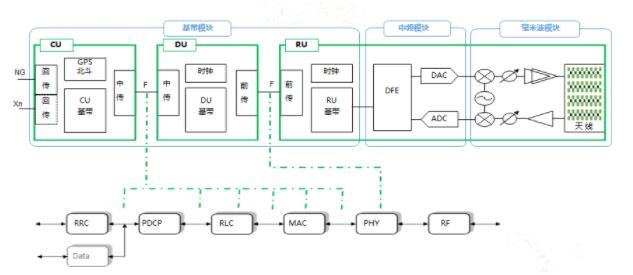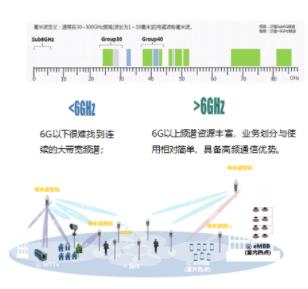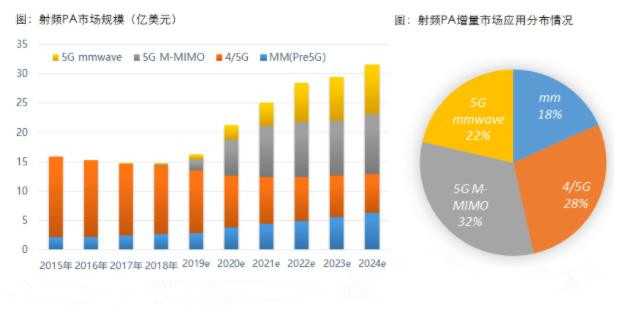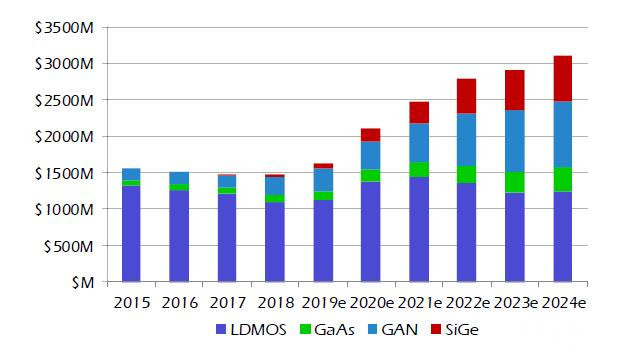5G millimeter-wave communication usually refers to the electromagnetic wave whose frequency band is 30~300GHz and corresponding wavelength is 1~10mm. Its operating frequency is between microwave and far-infrared waves, and it has the characteristics of two kinds of spectrum. The frequency band close to 24GHz or above is also defined as the range of millimeter-wave. Millimeter-wave has the characteristics of a wideband, narrow beam, small transmission interference, good security, small multipath effect, high Doppler resolution, small device size, and easy integration, etc., so it has a broad application prospect in 5G mobile communication, Internet of things, radar, satellite communication, and other fields. At present, the frequency bands mainly concerned are 28-30ghz, 38GHz, 45GHz, 57-71ghz, 71-76ghz, 81-86ghz, 100GHz, and so on.
1., Application scenario
5G millimeter-wave communication applications include millimeter-wave waveguide communications, ground communications and satellite communications, military communications, and wireless ground communications and satellite communications. Related to 5G communications. According to the definition of 3GPPTR38.913, several scenarios related to high-frequency band applications are indoor hot spots, dense urban areas, macro coverage, high-speed rail access and retransmission, and satellite extension to the ground.

2, Key technologies
The main technical challenges of millimeter-wave communication include millimeter-wave RF devices, millimeter-wave antennas, ultra-wideband low-complexity signal processing, space channel models and optimization of network architecture and airport, and a combination of the airport and high-frequency PCB band.
3, System architecture
The hardware of the 5G MMW base station is composed of baseband module if module and MMW module unit
Baseband module: to achieve 5G baseband processing, digital domain beamforming, base station transmission and other functions, by CU, DU, and RU digital logic together to achieve, in circuit design usually use CPU+DSP+FPGA architecture, or use dedicated SOC chip baseband processing, but also need IP switching chip, transmission interface and other circuits. If module and millimeter-wave module: located in RU unit, includes the digital front end (DFE), analog/digital conversion circuit, millimeter-wave mixer, analog domain beamforming and antenna array, including FPGA or SOC chip for baseband processing and DFE function, clock system, DIGITal-to-analog conversion ADC, DAC,millimeter-wave circuit board and antenna array, etc.

5G millimeter-wave communication
4., The communication frequency band must extend to the direction of millimeter-wave
4.1With the development of high capacity, high rate, and low delay services, the communication frequency band will inevitably extend to the direction of millimeter-wave;
4.2The basic architecture of 5G mobile communication will adopt the communication mode combining low-frequency band and millimeter-wave band;
4.3Main application scenarios of 5G millimeter-wave communication to solve hotspot traffic problems, millimeter-wave base station volume is smaller, convenient covert installation; Suitable for areas where optical fiber access is difficult or the cost is high, install the CPE terminal on a wall or near a window. Millimeter-wave, MEC, AI technology, suitable for the park networking scheme; Smart control applications such as smart factories, smart parks, and smart docks will be built.

5., Market size
As 5G construction advances, sub-6ghz wireless infrastructure begins to be deployed to bridge the bandwidth gap between existing 4G LTE networks and future mill wave (mmW) 5G implementations,5G mmW is positioned as a coverage solution for high-value hotspots, complementing the Sub 6GHz 5 wide coverage network, The number of deployments is expected to increase from 38,000 in 2018 to 1.4 million in 2024, with the main applications in the 24-27ghz and 27.5-29.5ghz bands.
Radiofrequency (rf) market
In the next 4-5 years, the base station construction market will see explosive growth, compared with 4G, radiofrequency device market, using multiple-input multiple-output technology 5G M-MIMO macro station is expected to achieve 3-4 times the growth, 5G millimeter-wave will also be about 8 times the market growth; The total market is expected to grow at a cagR of approximately 13% from a trough of $1.48 billion in 2018 to a peak of $3.16 billion in 2024; In terms of business composition, the combined contribution from 5G M-MIMO macro station and 5G millimeter-wave will be more than 50%.

6. , Progress and bottlenecks in the commercialization of 5G millimeter wave
At present, the United States, Japan, South Korea, and other countries have completed the 5G millimeter wave spectrum division and started commercial deployment, and the relevant industrial chain has also reached preliminary maturity. However, compared with the United States, Japan, South Korea, and other countries, the commercialization process of 5G MMW in The Chinese market is relatively lagging. Although 24.75-27.5ghz and 37-42.5ghz bands were approved in July 2017 for 5G MMW experimental bands, the specific commercial timeline of MMW has not been officially released. The lack of clear top-level commercial time planning and the low maturity of the industrial chain also restrict industrial development. The r&d and manufacturing of components in upstream of the DOMESTIC 5G millimeter-wave communication industry chain are still in the pilot stage of R&D. Limited by technological realization, production cost, and infrastructure construction schedule, it has not yet reached commercial mass production.